Don’t Hate The V8: A Monstrous ’68 Camaro
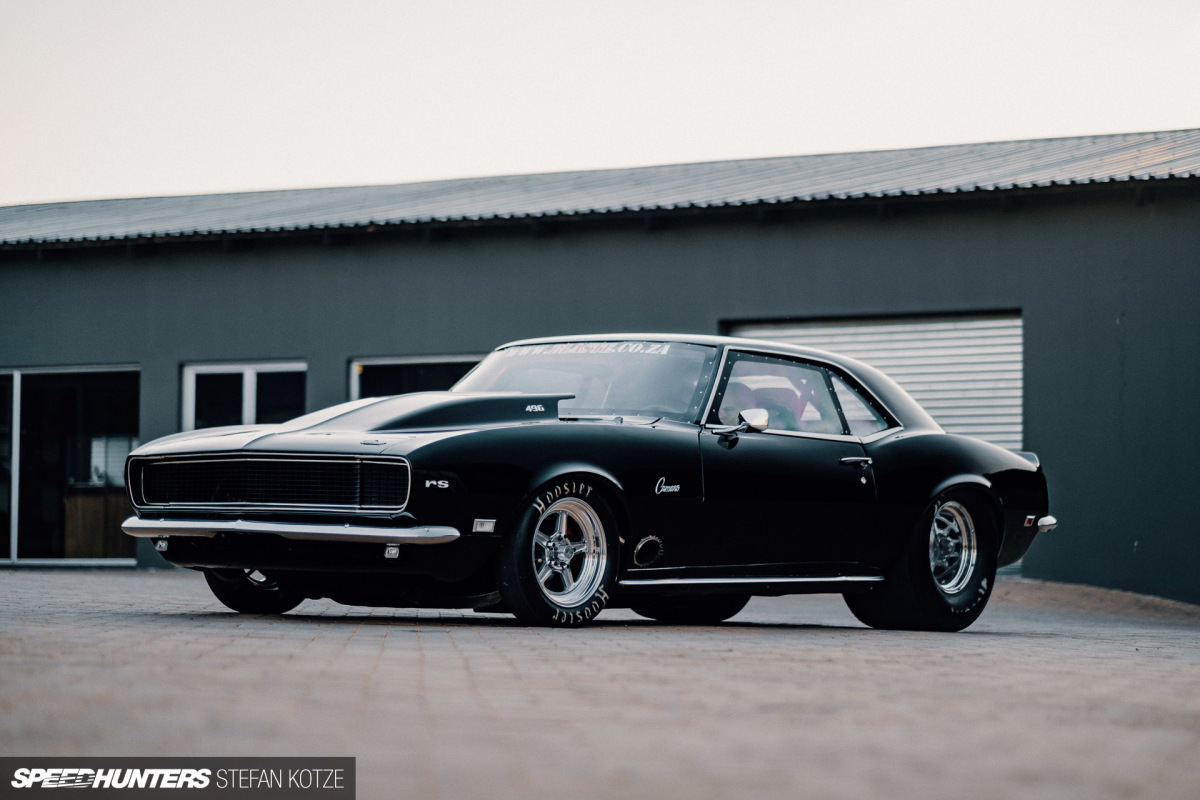
Emissions regulations, noise pollution, fuel efficiency, space and weight are all good reasons to move over to cars with small-capacity forced induction engines. But heck, sometimes you just gotta screw it and say YES to displacement.
A heavily-raked, fat-rubber-wearing, loud, fuel-swallowing 1968 Chevrolet Camaro RS sounds like a perfect antidote to modern eco-tech. I stumbled across this American beauty some time ago while featuring a kitted-out man cave, and knew it deserved a closer look.
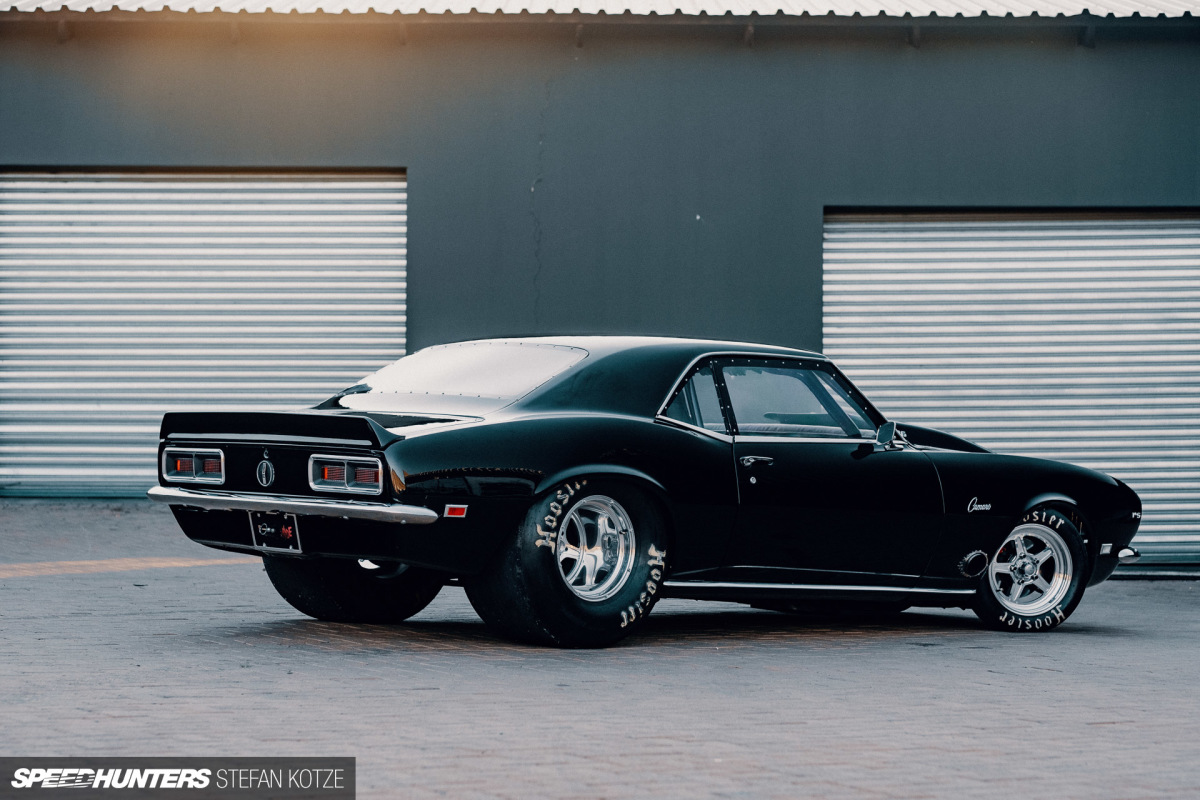
The Camaro is owned by Craig Czank, who loves collecting all sorts of custom cars – they just need to be fast and powerful. Sometimes Craig has his owns builds commissioned, but when he comes across something awesome that’s already built, like this one was, he simply makes the owner an offer they can’t refuse.
While the Camaro hasn’t seen any proper action since Craig acquired it, in the hands of the original owner, Henk Bannink, it regularly frequented the strip.

When Henk purchased the Camaro it was still in its late-’80s and early-’90s drag racing guise, as shown in the old film scan photo above. As you’d expect, the car wasn’t in the cleanest condition, so a lot of time and money was invested to get it into the pristine condition you see today.
CHAPTER TWO

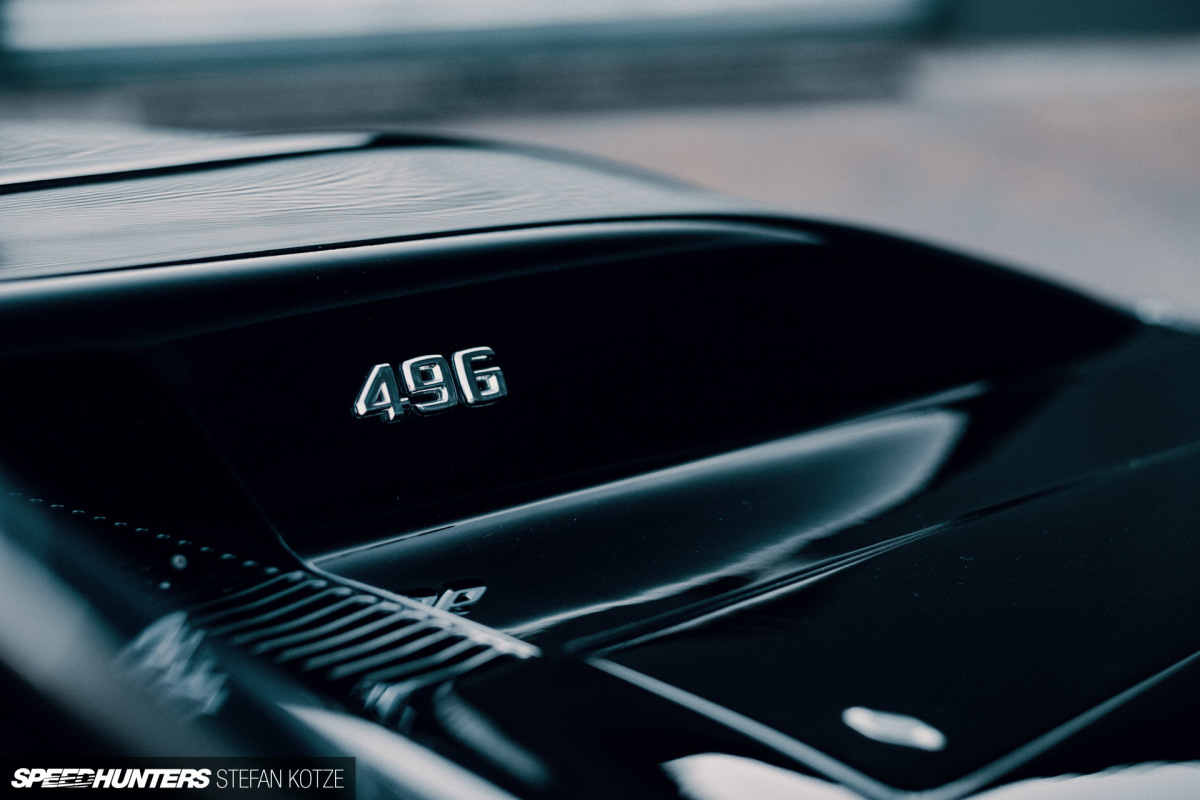
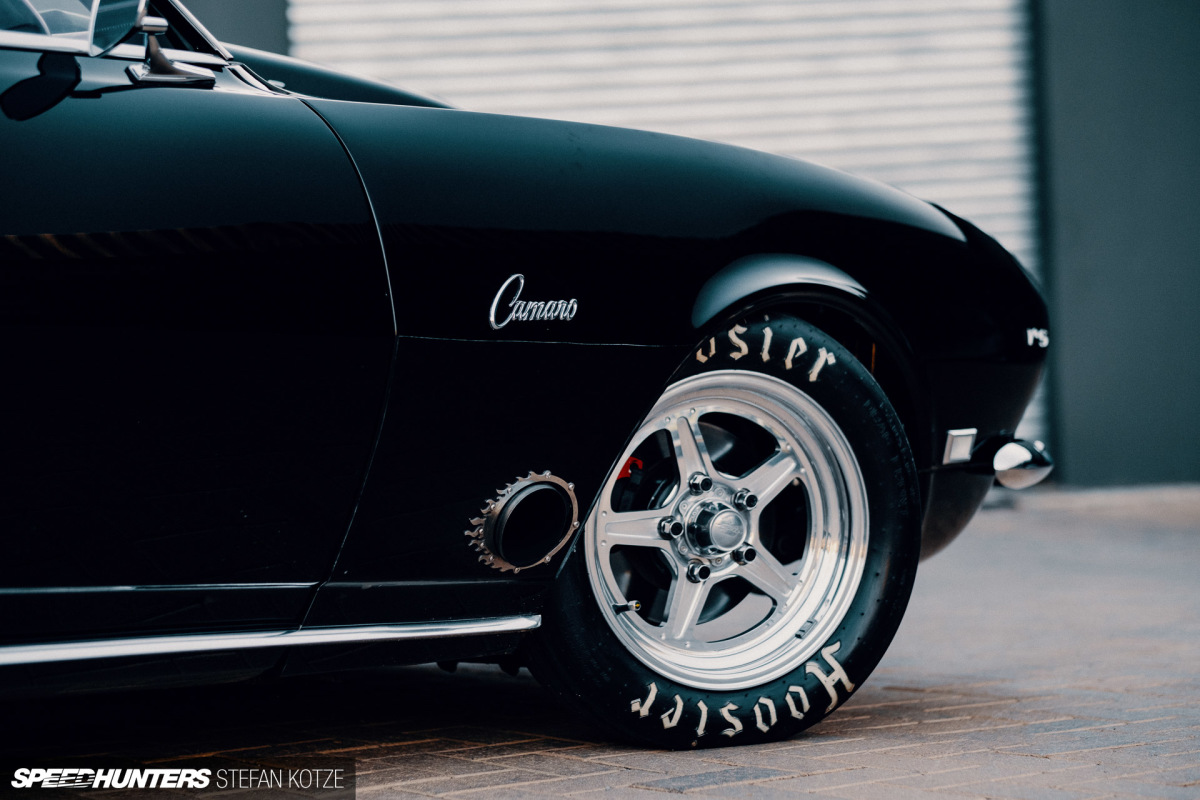
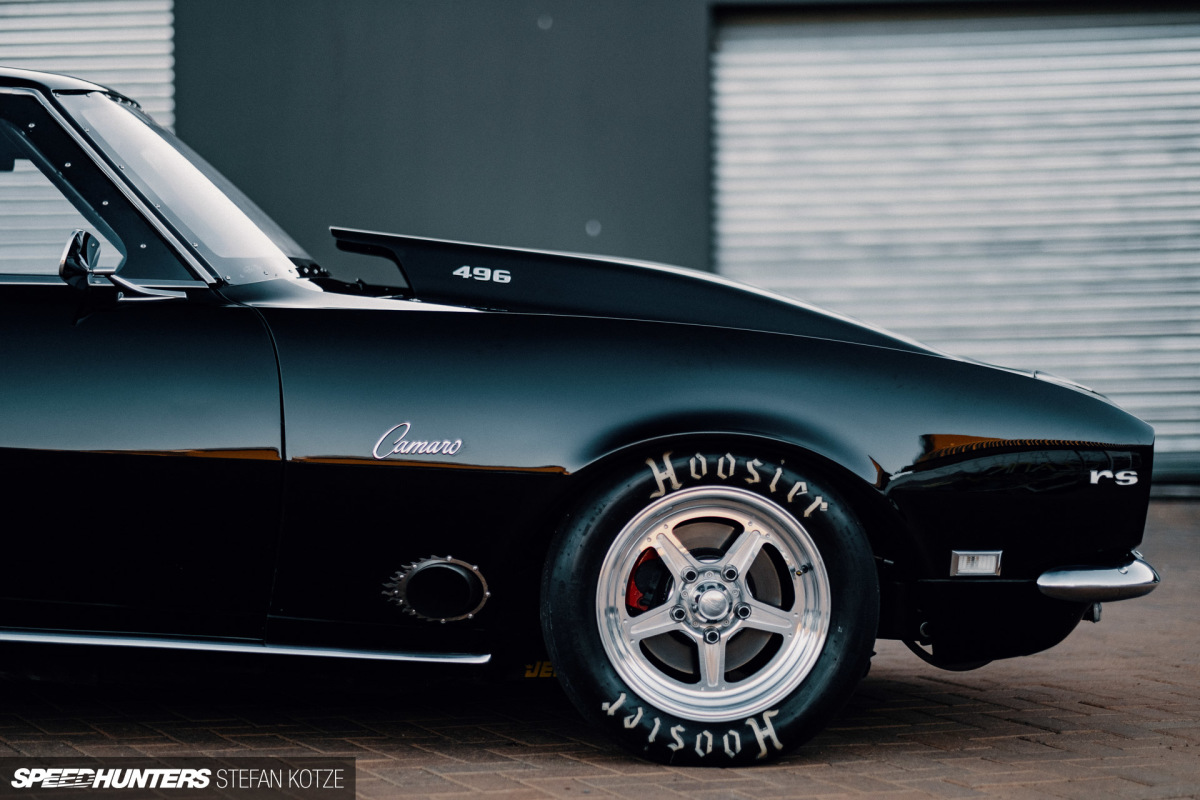

The rebuild was completed by Mark Slooten from Slooten Race Cars, a well-known name in South Africa’s muscle car fraternity. Among other things, the chassis underwent a thorough clean up and the body received a full respray in deep gloss black, which is both classic and intimidating.
Instead of blacking out the brightwork, as has become quite popular in recent years, all the factory chrome pieces were simply brought back to life with elbow grease and a whole lot of metal polish. The badges, mirrors and lights were also restored to as-new condition.

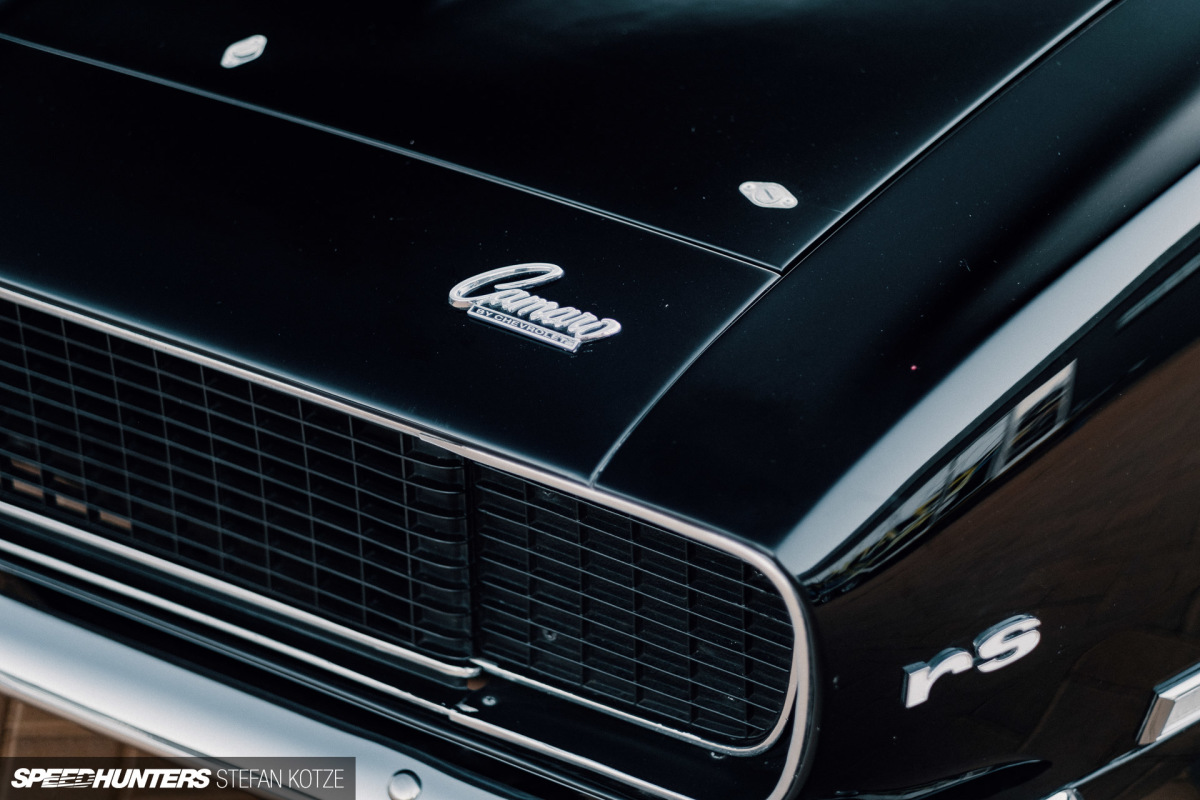
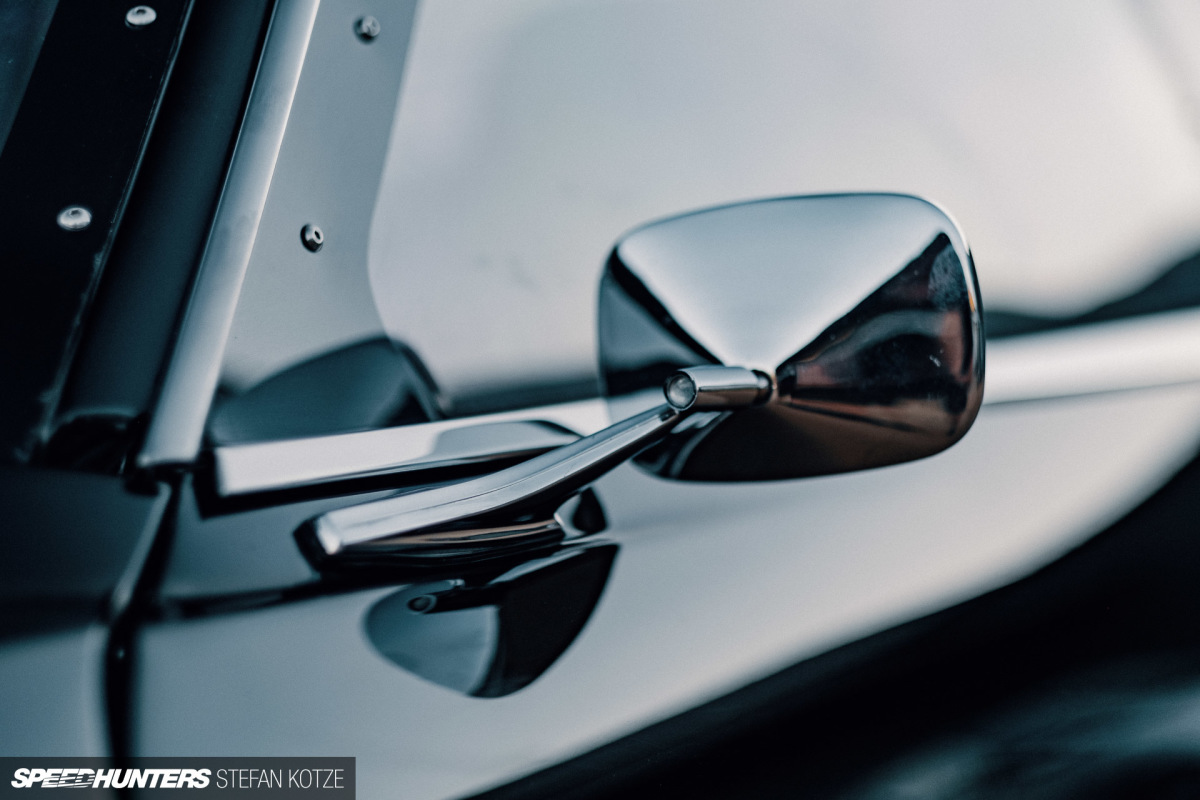
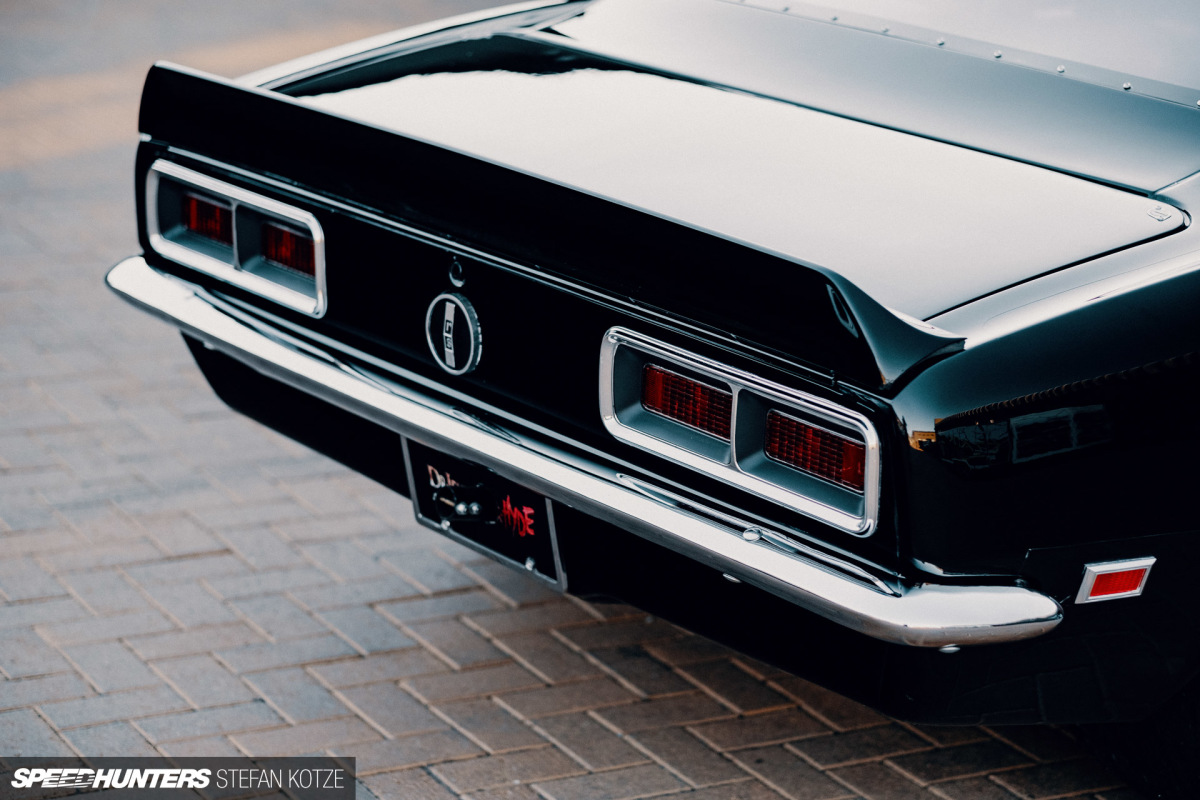



The ’68 Camaros that came with hidden headlights have always been my favourites; it was just such a cool and unique feature.
At the back of the car and inside the engine bay you’ll see ‘Dr. Jekyll & Mr. Hyde’, because I guess this car has a split personality between normal and crazy. But let’s be honest, no one will ever be fooled into thinking this car is even a little bit sane.

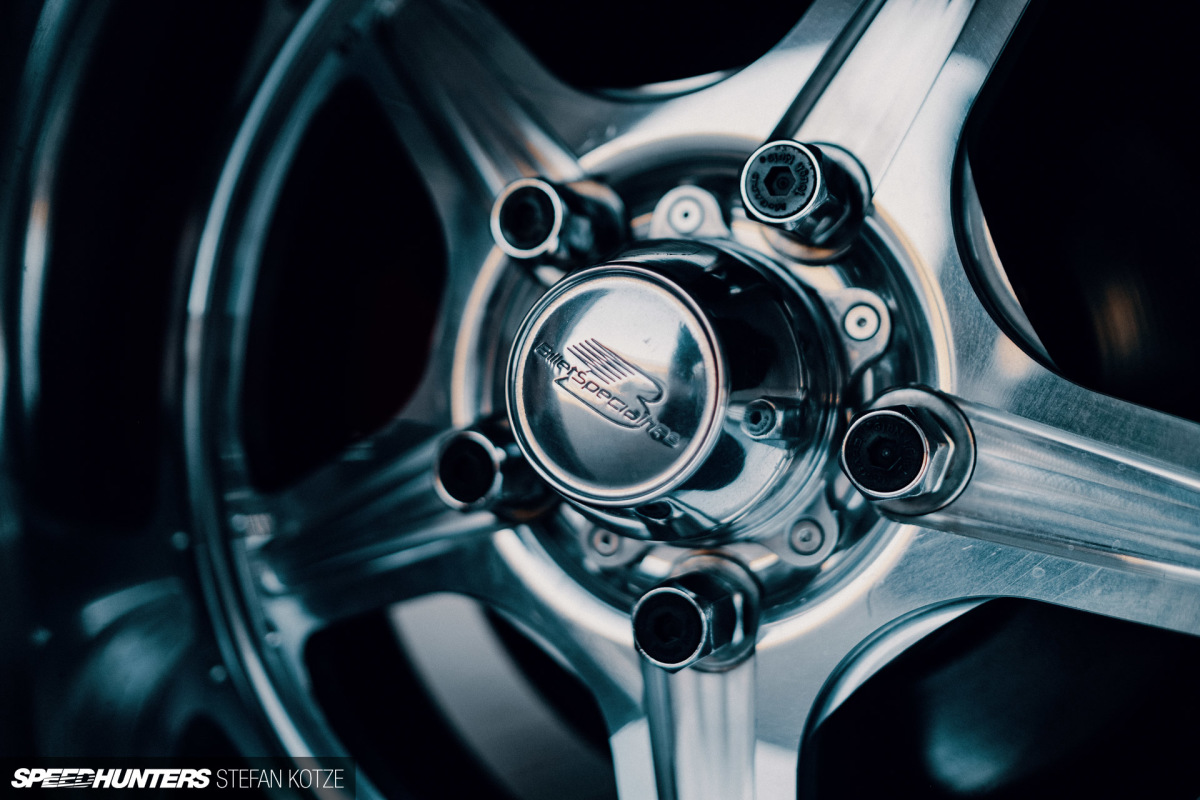
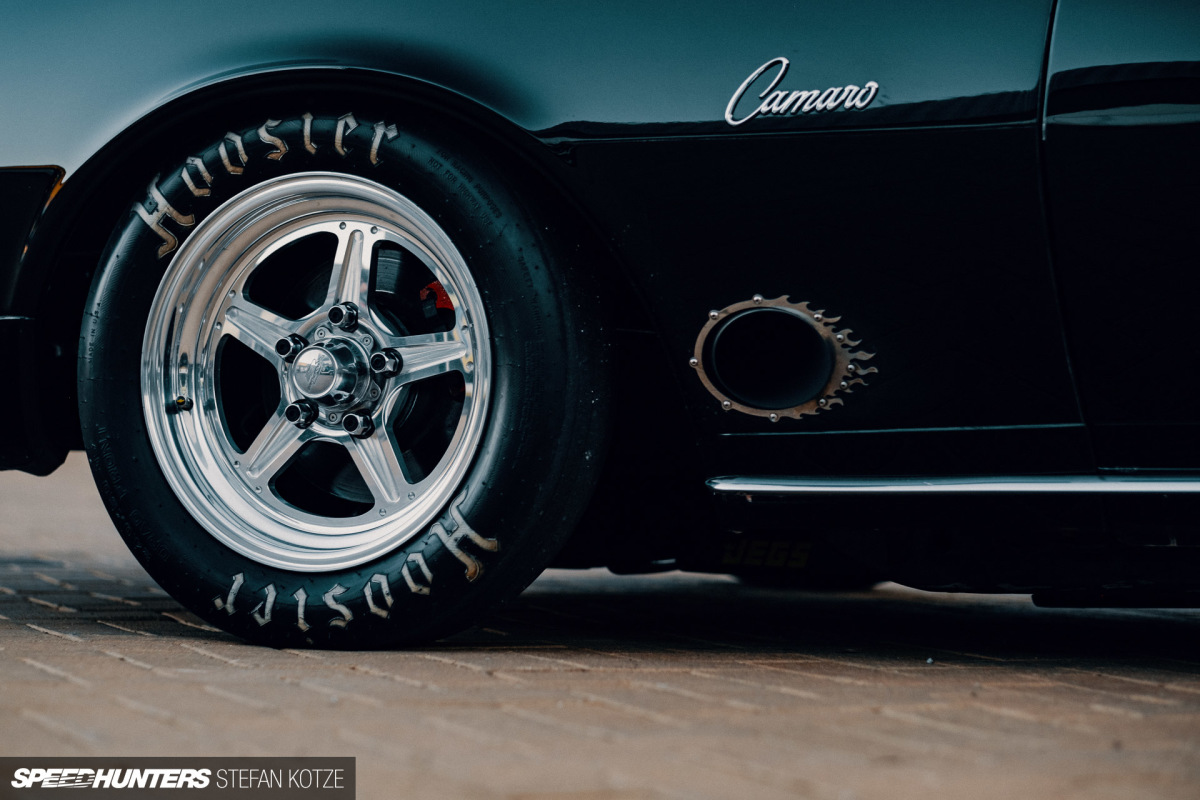
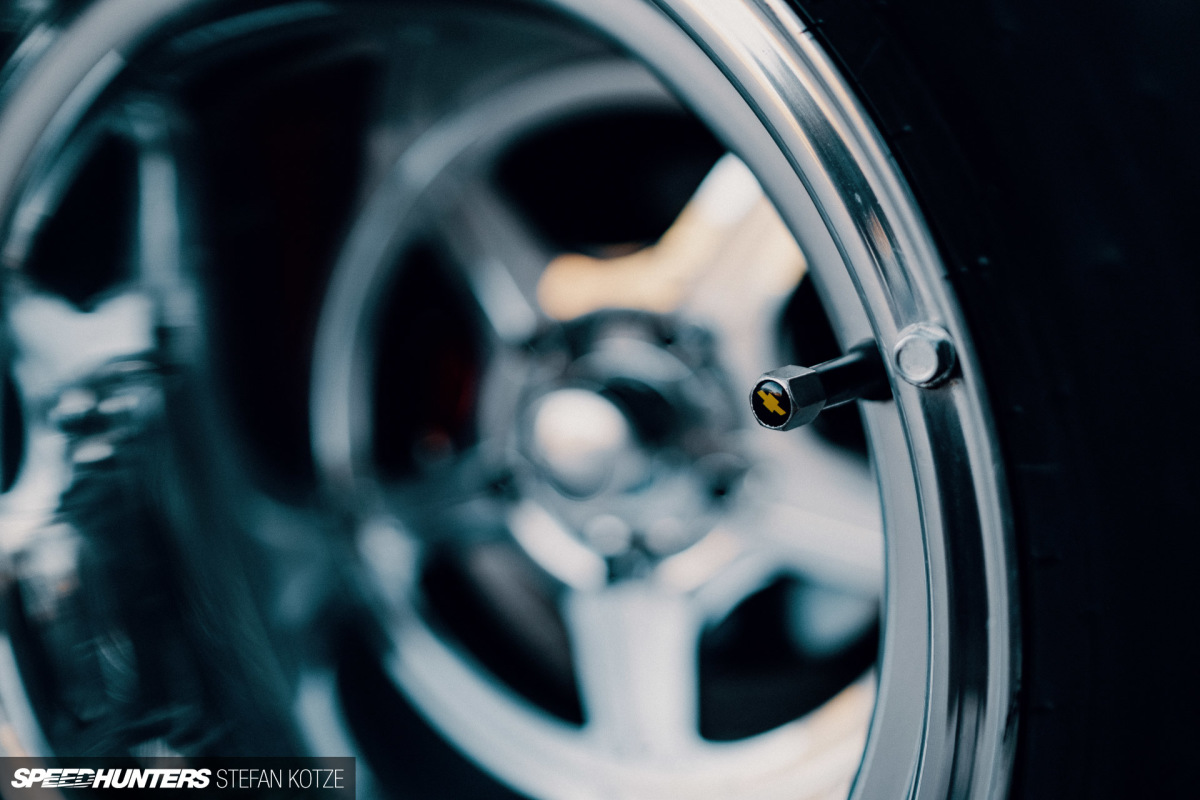

Underneath the wheel arches, things get very serious. The wheels – skinnies up front and super-wides at the rear – are Billet Specialities Comp items wrapped in Hoosier rubber – 32×14-15 slicks out back to get the power down. There’s a venerable Ford 9-inch differential with a Strange 4.11 spool setup, along with Summers Bros. 35-spline shafts. In the suspension department you’ll find Art Morrison ladder bars with Strange coilovers.
CHAPTER THREE

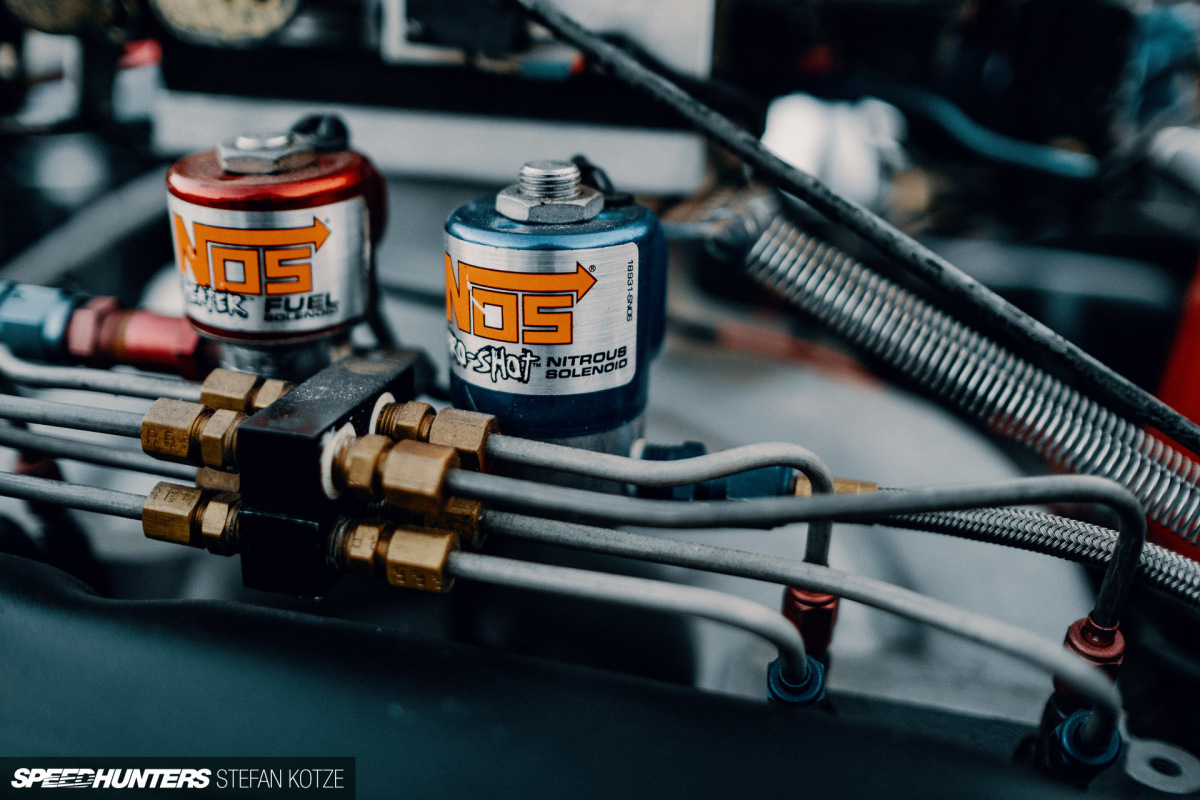
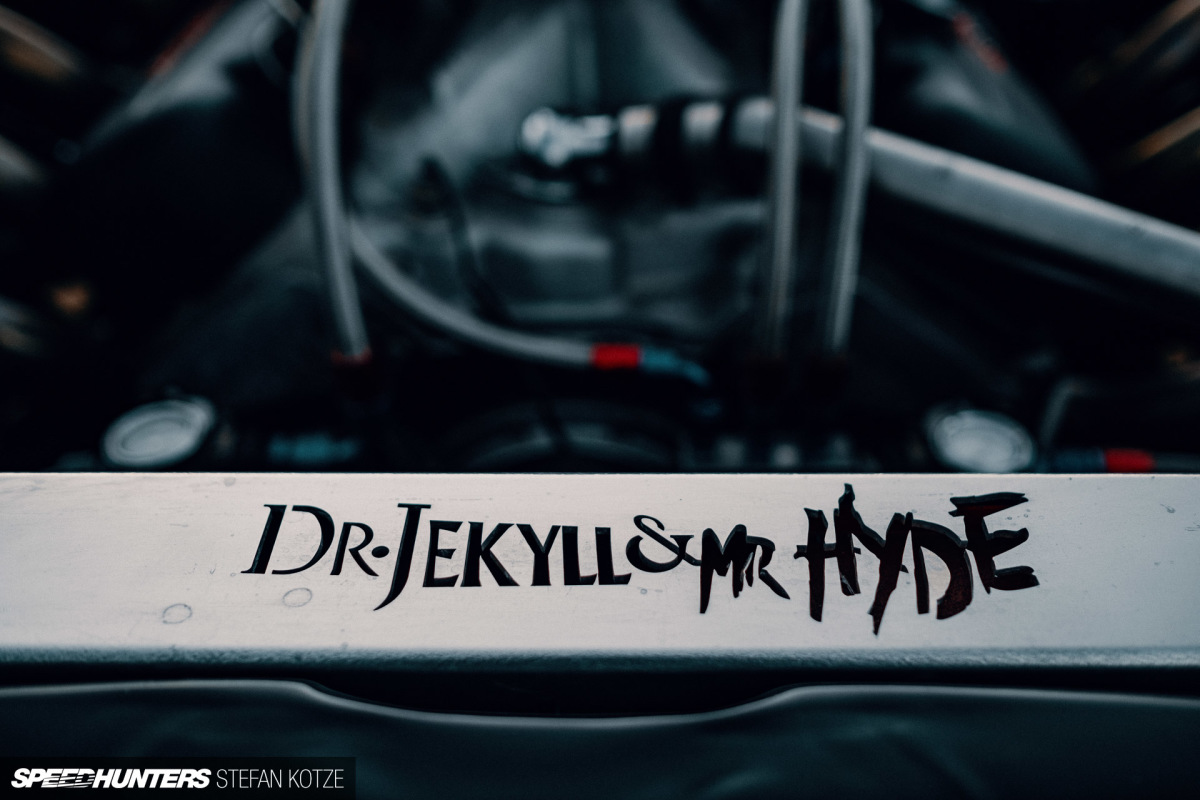
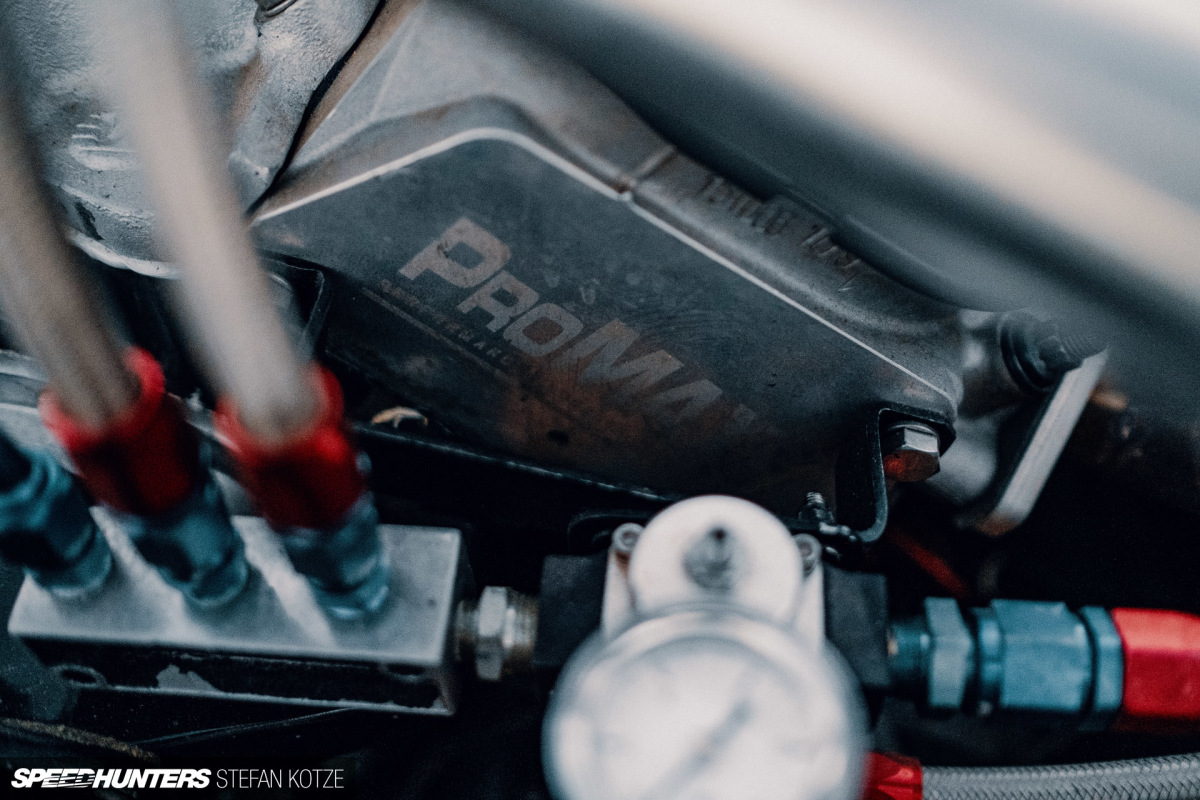

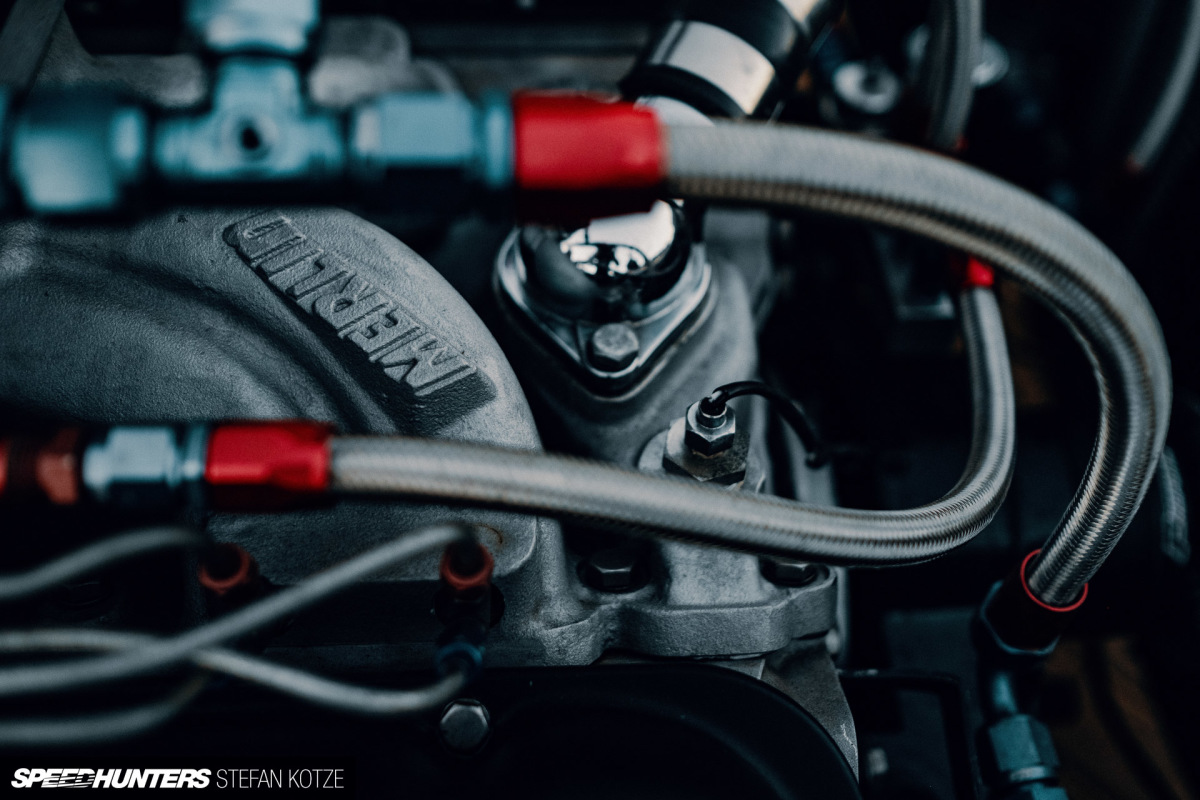
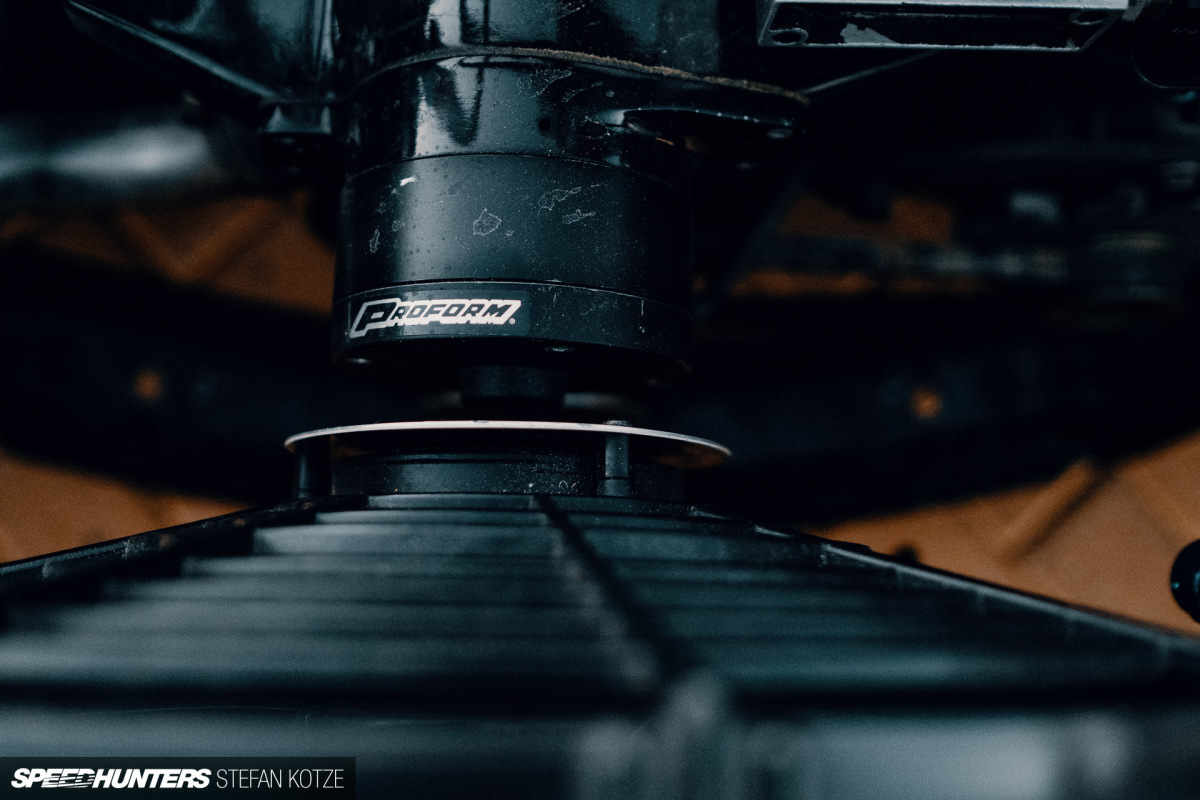
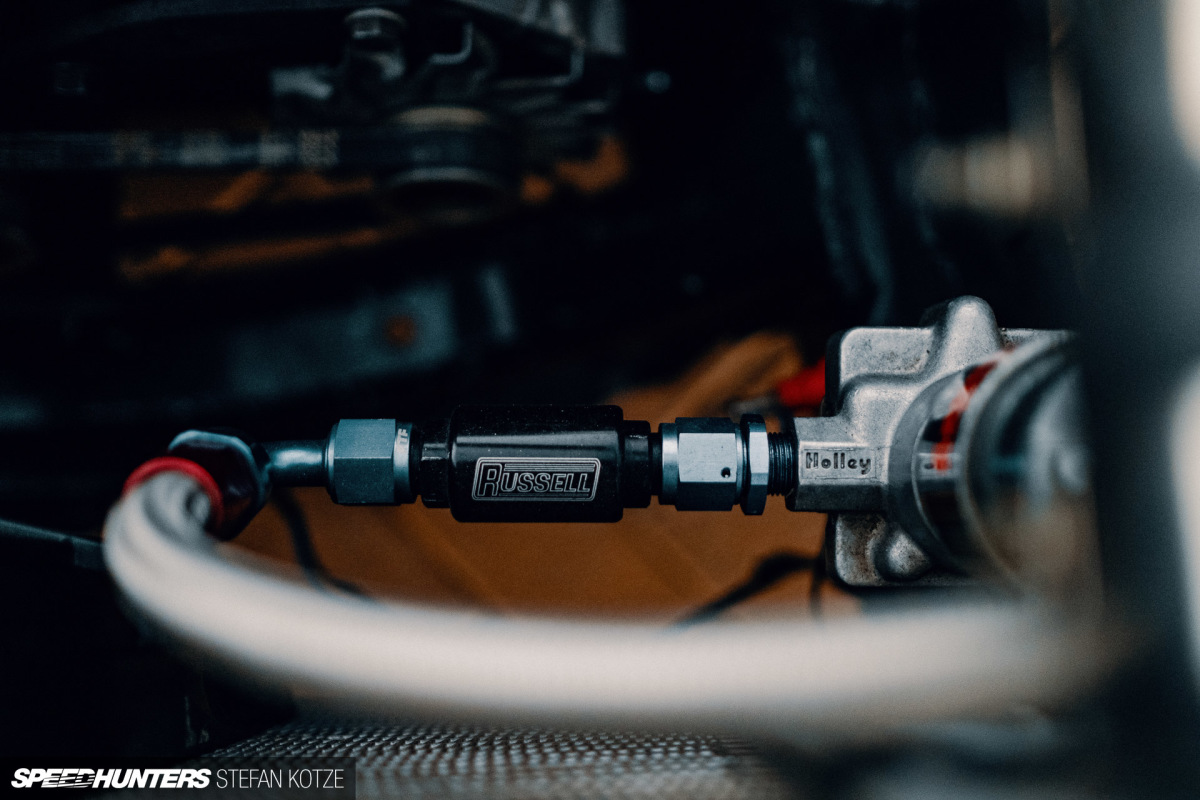
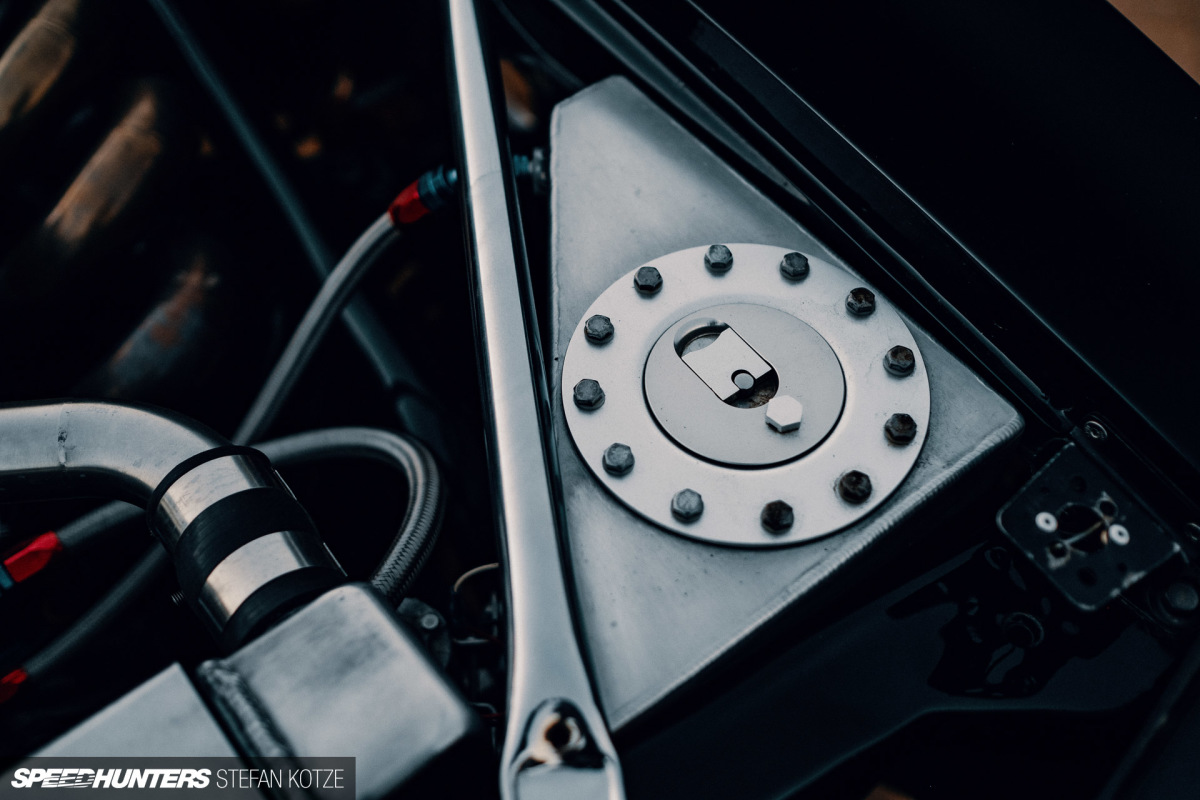

In the belly of the beast lives a fully-built Chevy 454ci (7.4L) V8 with an Eagle 4.25-inch stroker crank, Eagle 6.375-inch H-beam rods, Mahle 12.5:1 forged pistons, a Crane solid roller cam, ProMaxx 320 Series aluminium cylinder heads, Victor Jr. intake, a Holley 1050cfm Dominator carb, and as a finishing touch NOS direct port nitrous oxide injection. Spark is provided by an MSD ignition system and all the hoses are braided stainless steel items with FTF fittings. The custom 4-into-1 headers exit right out each side of the front fenders, resulting in a lot of rumble.


To transfer the power to the wheels, there’s a 2-speed GM Powerglide with trans brake, and a Hughes 4,000rpm stall converter.
In the hands of its previous owner, the Camaro has a run a best ET of 9.2-seconds at 232km/h in this guise, and that was at a power-robbing altitude of 1,582m (5,190ft) above sea level. Our drag strips here in South Africa are pretty average too, so I’m sure this car would run a lot quicker in perfect conditions.
FINAL CHAPTER
The Cockpit
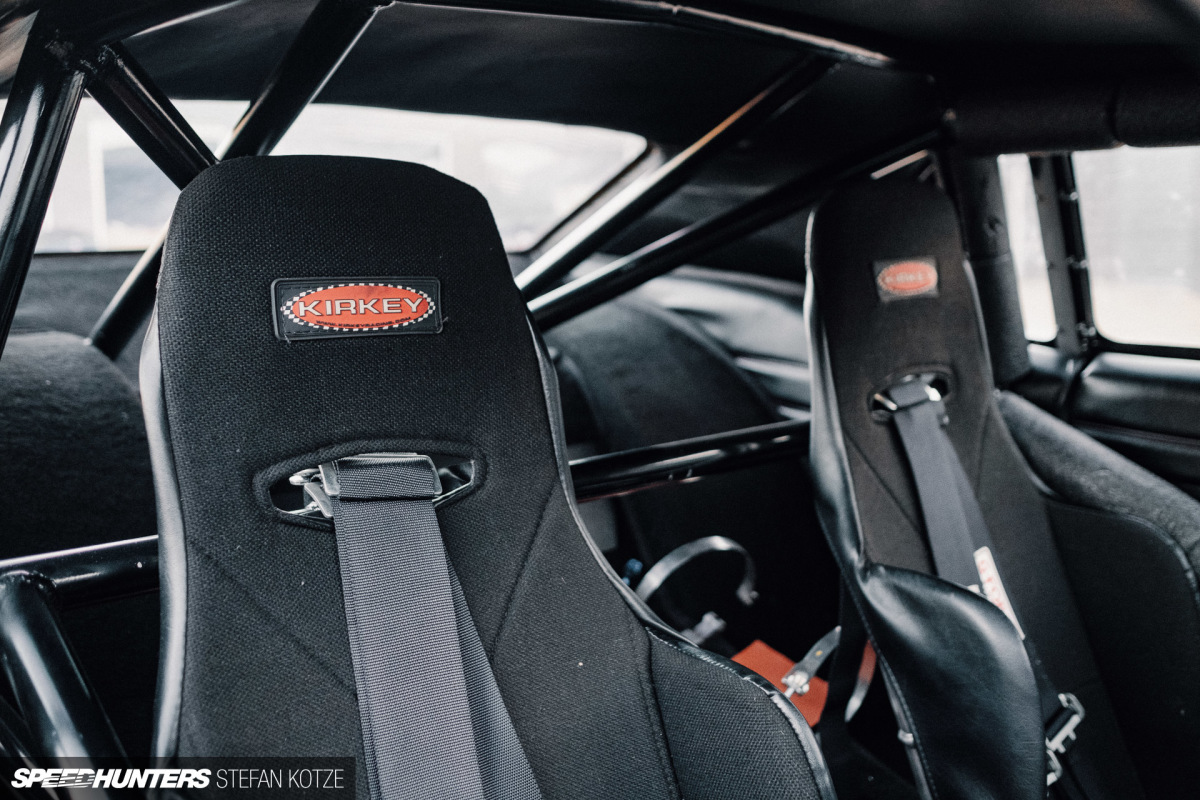

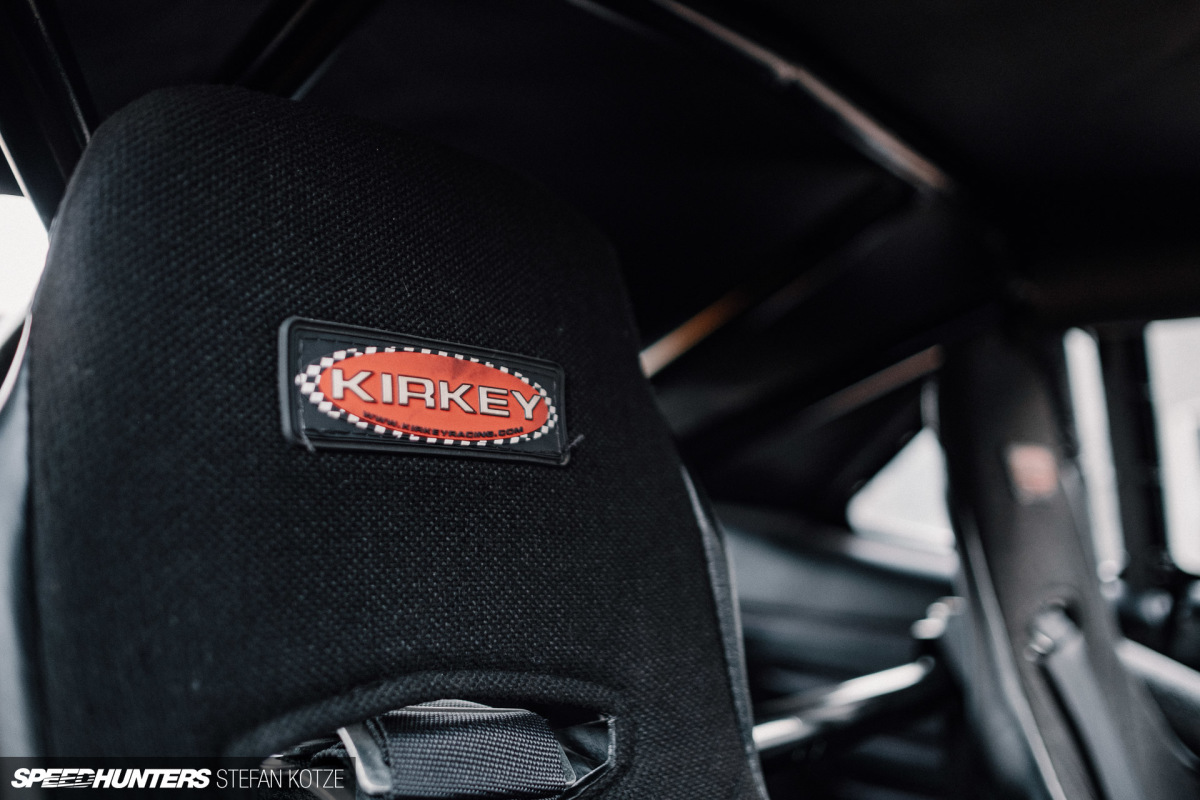


The hot seats are Kirkey drag items, which don’t look all that comfortable but I’m sure keep occupants where they need to be, something helped by G-Force 5-point harnesses. There’s also a Momo steering wheel fitted with a nitrous activation button.

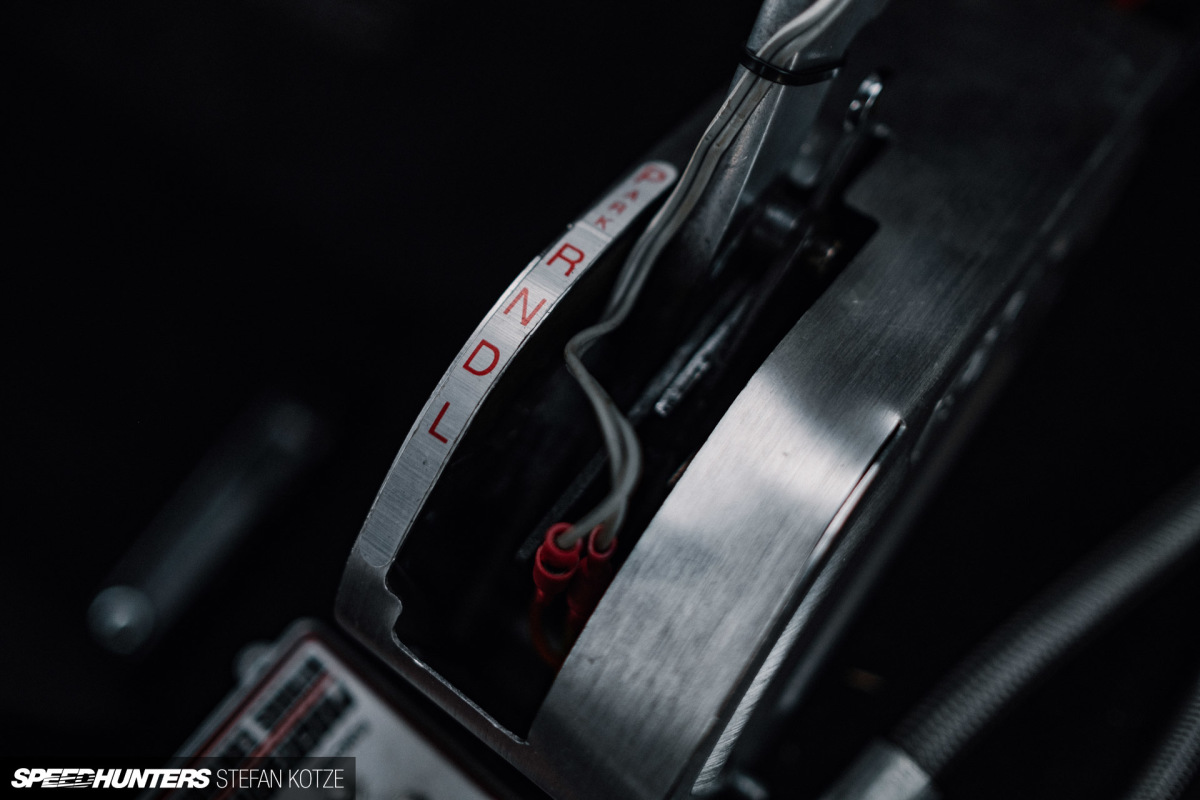

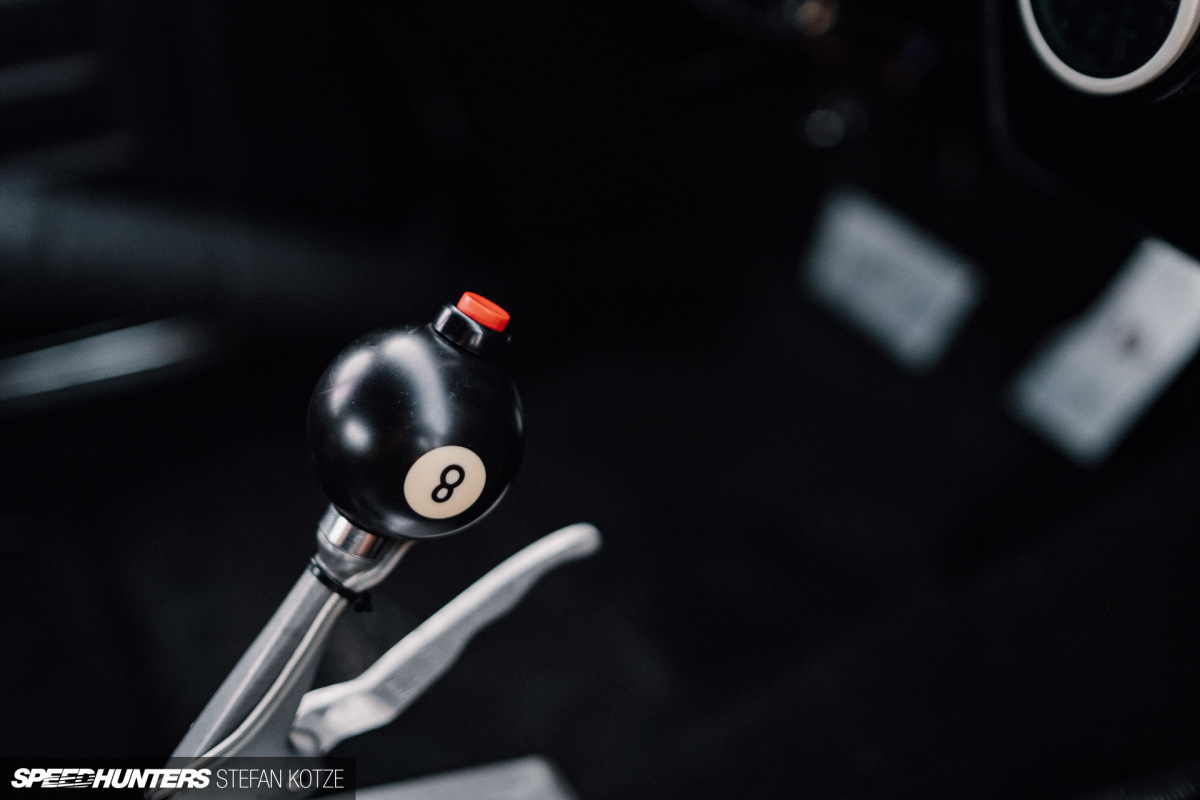
Gear changes are made through a TCI shifter that also has a B&M line-lock for those epic start line burnouts. The pedals are pretty cool; there’s a pause icon for the brake and a fast-forward icon for the gas pedal, which makes perfect sense.

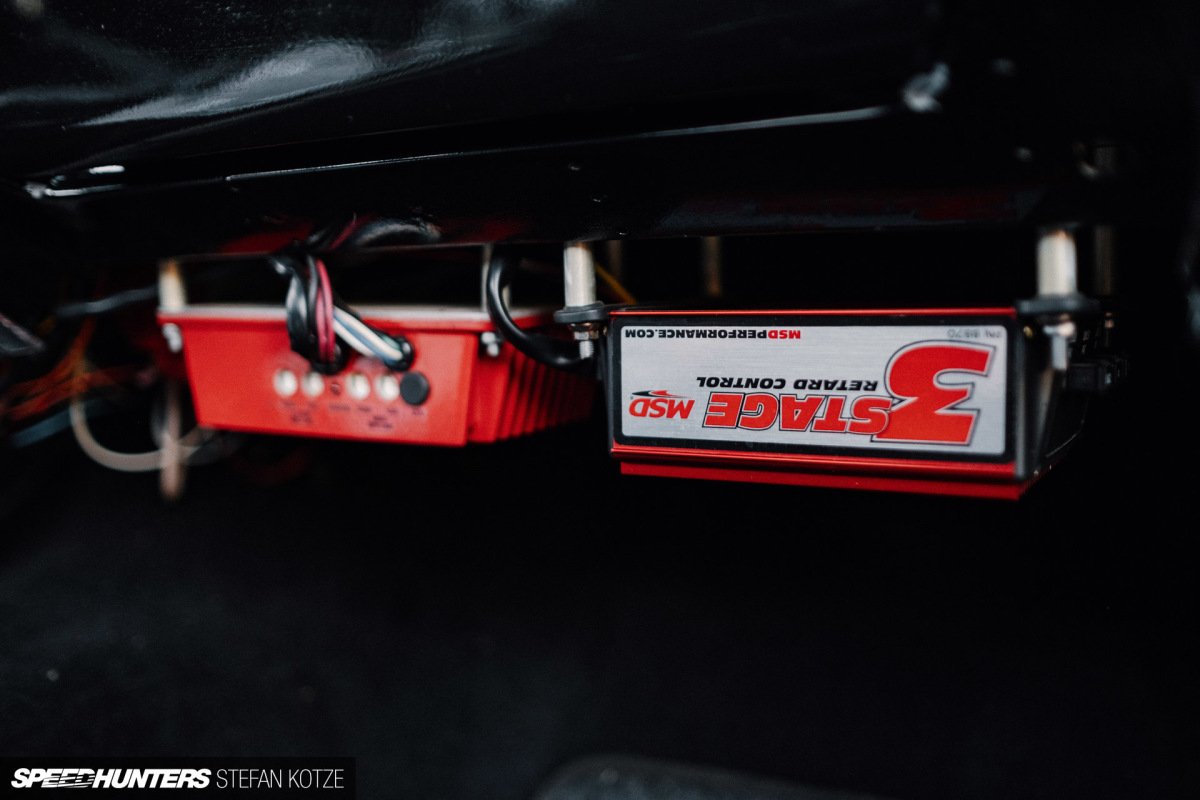
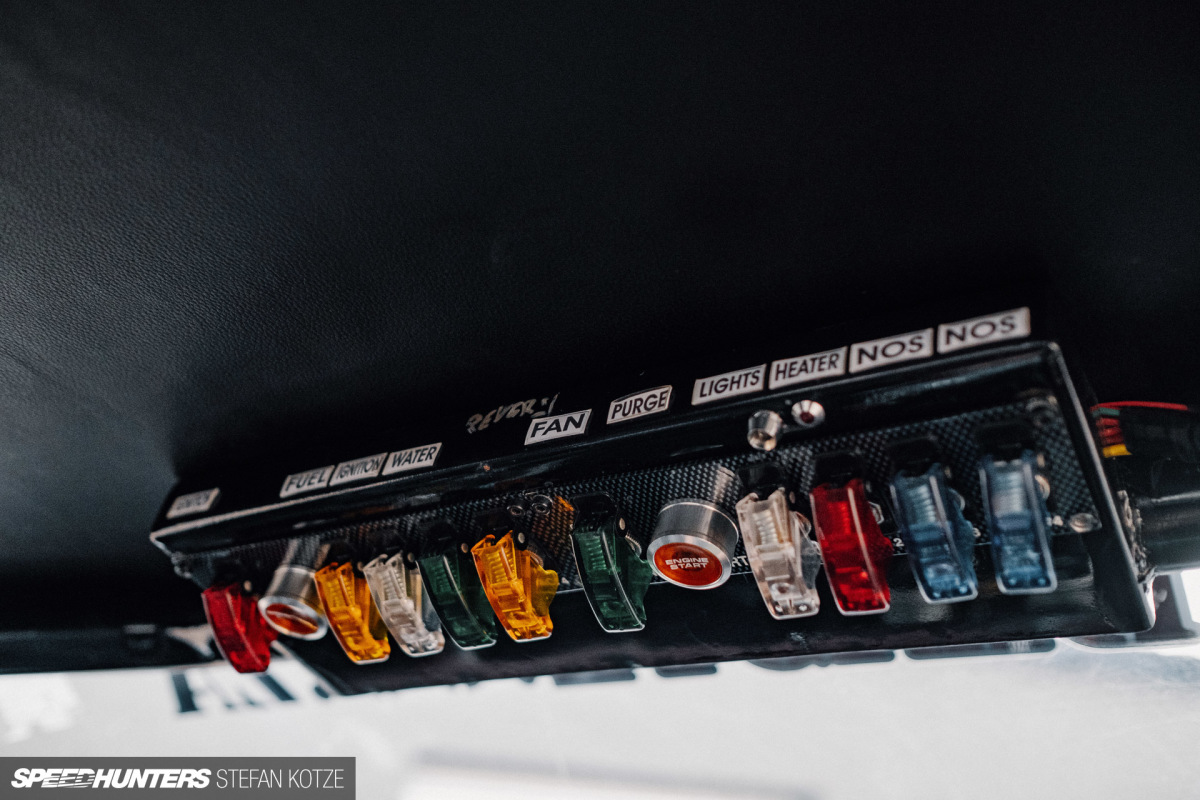
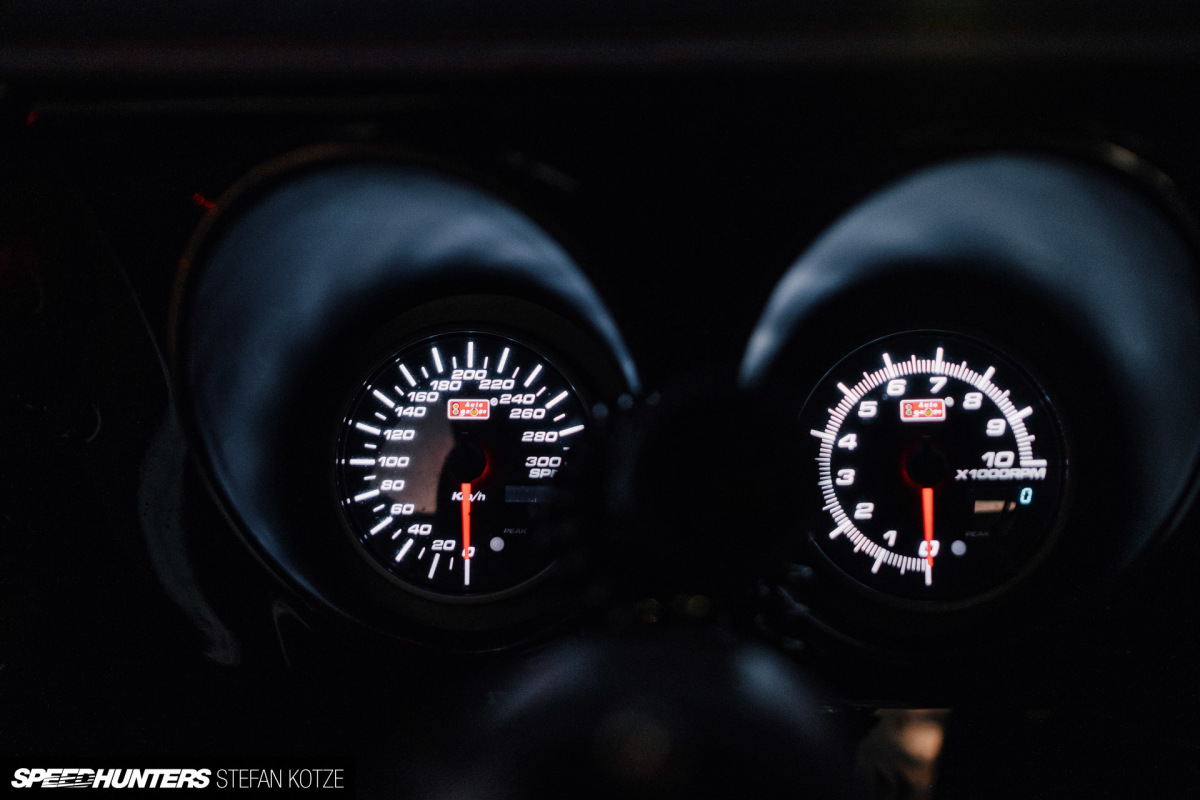
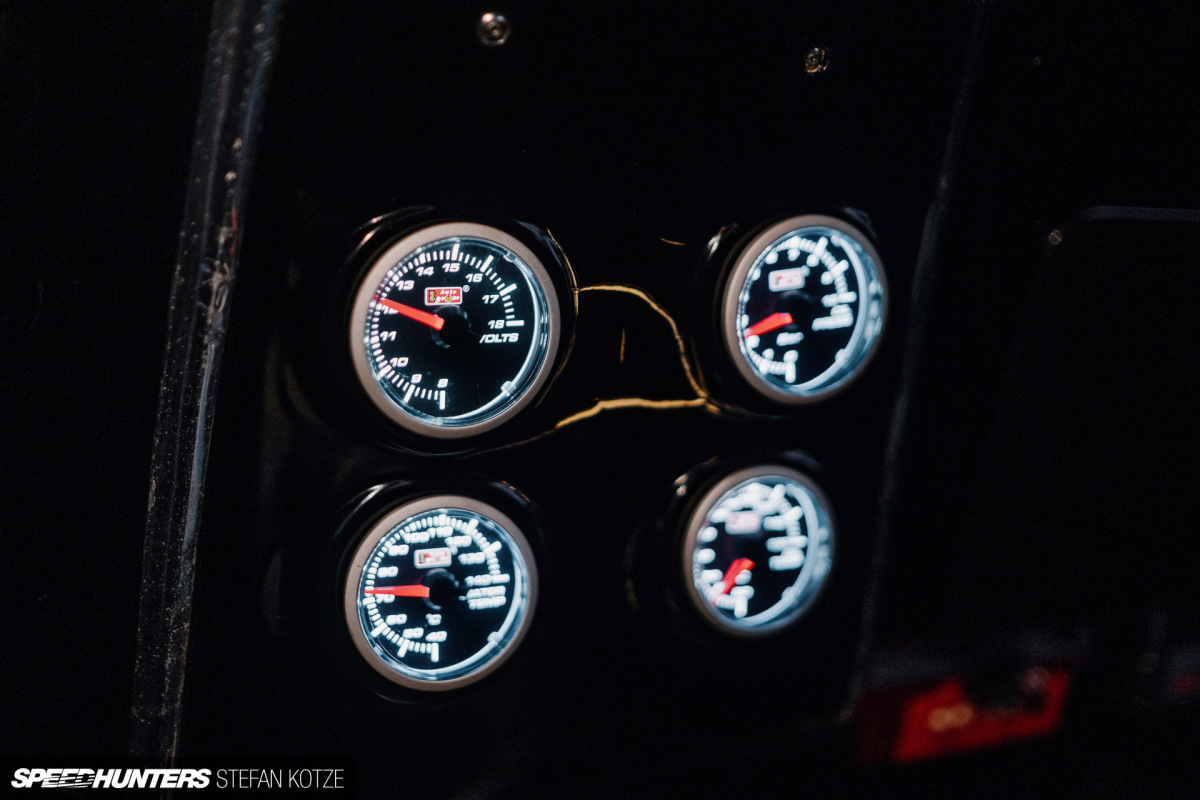

Even though engine configurations in new cars are rapidly becoming smaller, quieter, and less ridiculous versions of yesteryear’s, these big, old dinosaurs will always have a place in a true petrol-head’s heart. I’d have one for sure, although I’d probably need someone to donate a fuel station first.